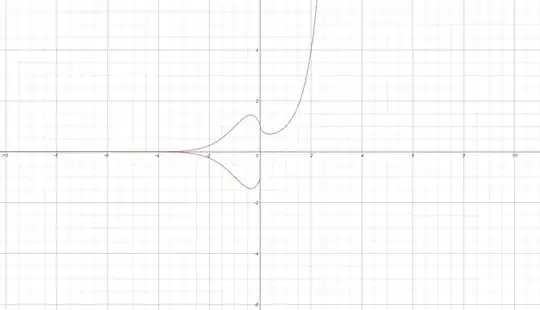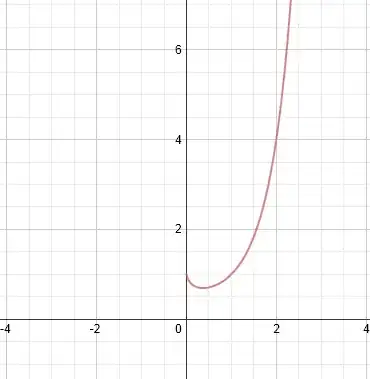A more direct answer is the reason your graphing calculator doesn't graph when $x<0$ is because there are infinite undefined "holes" and infinite defined points in the real plane. Even when you restrict the domain to $[-2,-1]$ this will still be the case.
Note that for $x^x$ when $x<0$ if you calculate for the output of certain x-values (using the Texas I-85) you will have...
$$x^x=\begin{cases} (-x)^x & x=\left\{ {2n\over 2m+1}\ |\ n, m \in \Bbb Z\right\}\frac{\text{even integer}}{\text{odd integer}}\\ -(-x)^{x} & x=\left\{ {2n+1\over 2m+1}\ |\ n, m \in \Bbb Z\right\}\frac{\text{odd integer}}{\text{odd integer}}\ \\ \text{undefined} & x=\left\{ {2n+1\over 2m}\ |\ n, m \in \Bbb Z\right\}\bigcup \left\{\mathbb{R}\setminus{\mathbb{Q}}\right\} \left(\frac{\text{odd integer}}{\text{even integer}},\text{irrational numbers}\right) \end{cases}$$
(Just remember to simplify fractions all the way until the denominator is a prime number (ex: $2/6\to1/3$))
This is because when we have $x^a$ it can only extend to the negative domain if $a$'s denominator is odd (ex: $x^{1/3},x^{2/3}$).
Thus there are infinite undefined values from $[-2,-1]$ that are still (even/odd) when simplified. For example $( -3/2,-1/2)$ are undefined but so is $ (-19/10, -17/10, -15/10...-11/10)$ and $(-199/100, -197/100, -195/100,.....-101/100)$. This includes irrational numbers.
There is also infinite defined values. There are infinite defined values that have positive output and infinite defined values that have a negative output. For example there is $(-2,-4/3$), ($-2,-24/13,-22/13,-16/13...-14/13)$ and $(-2,-52/27,-50/27,-48/27,-46/27,-44/27...-28/27)$ that are still positive.
Then there is $(-5/3,-3/3)$, $(-25/13,-23/13,-21/13,-19/13..-13/13)$ and $(-53/27,-51/27,-49/27,-47/27,-45/27,-43/27...-27/27)$ that is negative.
Because the function is so "disconnected" with undefined holes and real numbers the graphing calculator still fails to register a graph of $x^x$ when $x<0$.
Thus when you see $x^x$ with the three graphs in the peicewise definition note that I am hiding the infinite holes that exist for ${x}^{x}$.
Now since the outputs for the negative domain can be positive or negative we have two "trajectories". Thus we must graph $\left(-x\right)^{x}$ and $-\left(-x\right)^{x}$ with $x^x$.

However, if you want to graph $x^x$ to seem "more continuous" you can either $|x|^{x}$ or $\text{sgn}{\left(x\right)}|x|^{x}$.

